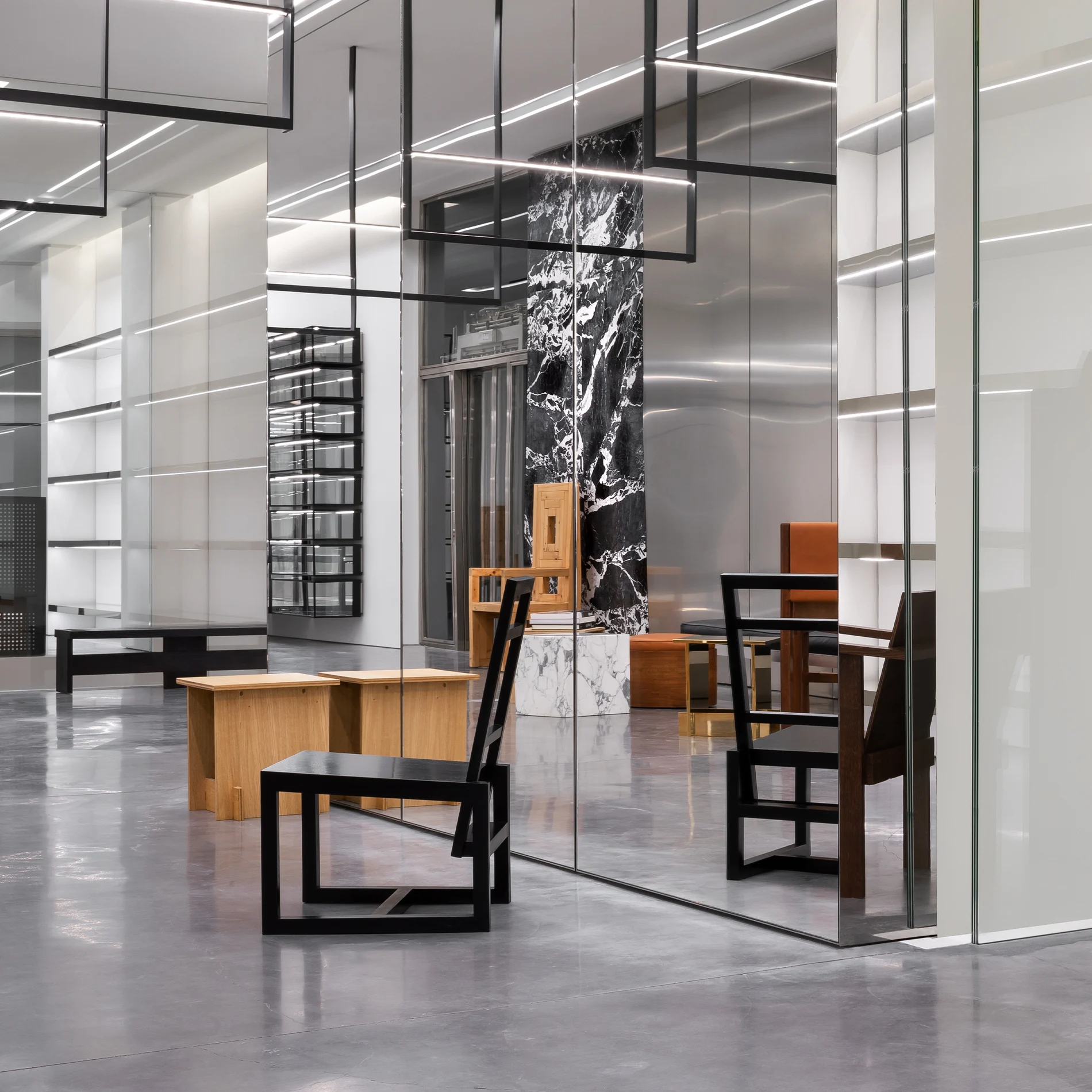Céline - Architecture according to Hedi Slimane
- Lucas TASTET
- Mar 28
- 3 min read

When the boutique becomes a manifesto
Crossing the threshold of the Céline boutique on Rue de Grenelle is like stepping into another world. The street fades away. Marble absorbs each footstep. The walls murmur a sculpted silence. Every reflection seems restrained. Here, time slows down, and space becomes a way of seeing.
Since taking the helm of Céline in 2018, Hedi Slimane hasn’t merely rewritten the brand’s stylistic codes — he has reconfigured its architecture. Each boutique becomes a silent manifesto, a physical extension of his aesthetic: rigorous, sensory, radically contemporary.
“I see boutiques as places where one can breathe. Where objects, garments, and artworks can exist in their own silence.”
— Hedi Slimane
Architecture as stylistic continuity
Hedi Slimane treats space as language. At Dior Homme and later at Saint Laurent, he had already imposed a vision of architecture shaped by tension and silence. At Céline, this vision sharpens. It becomes more refined. More assertive.
The materials — Grand Antique marble, blackened wood, polished concrete, steel, travertine — speak a dense and deliberate language. The furniture, often designed by Slimane himself, evokes French modernism, brutalist minimalism, or geometric abstraction. The lighting, sharp and directional, reveals more than it illuminates.
Nothing is decorative. Everything is structure.
Three Boutiques, three compositions
Rue de Grenelle, Paris
At this Parisian address, Slimane deploys his vocabulary with precision. Custom-designed furniture converses with vintage French pieces. The marble is matte, the lines are sharply cut. The atmosphere is hushed, almost monastic. One is invited to slow down — to observe.
Miami Design District
A sculptural space where architecture becomes almost musical. Travertine, plays of light, and ruler-drawn perspectives compose a place that is part gallery, part stage, part sanctuary. Here, clothing becomes a silent work of art.
Rue Saint-Honoré, Paris
Couture, accessories, leather goods — everything is staged with spectacular precision. A spiral staircase in brass, mirrored geometric walls, suspended volumes. You don’t simply enter — you’re drawn in.
Art as Resonance: The Celine Art Project
But these spaces are not defined by materials and lines alone. Since 2019, they have also been inhabited by artworks. With the Celine Art Project, Slimane sought to bring art into the space — not as decoration, but as dialogue.
In New York, a steel sculpture by James Balmforth rises like a fault line. In Miami, Antonia Kuo places a vibrant ceramic piece — Turbine — that seems to float between two worlds. The garment, the artwork, the space: all exist in resonance.
Each artistic presence reinforces what Slimane expresses without words: luxury no longer lies in the object, but in the gaze it requires.
A contemplative experience
Céline boutiques do not sell — they orchestrate. They impose a slowness, a sense of gravity. The client is no longer a spectator, but a visitor — almost a collector of moments.
In a saturated world, these spaces offer pause. They remind us that luxury can be a silence, a measured emptiness, a detail seen up close. A threshold crossed with intention.

The Slimane Imprint
Hedi Slimane left Céline in October 2024, but his architecture remains. In every angular mirror, every block of marble, every suspended volume — a trace of his rigor, his tension.
Today, walking through a Céline boutique shaped by Slimane is still an entry into a world. A world of silences, of weighty stone and subtle gestures. Where garments wait, placed like echoes.
Where luxury says nothing. It withdraws — and remains.
Credits : Céline





















Comments